We sent Olly Townsend, our very fast and very bearded cross country racing contributor to France to see what clever things Lapierre has in store for the XC racing world in 2018. Quite a lot, it would appear… However, it seems that even in France do you start running out of places to host secret product launches – as Olly continues:
“Ey oop, Nico!” said a tall man, straddling a Santa Cruz and speaking with a strong Yorkshire accent.
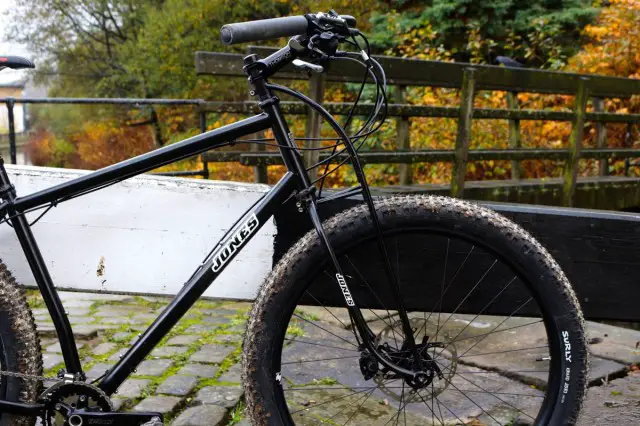
It’s not often that I get to ride with even one former world downhill champion, so bumping into a second one in the same afternoon was quite an impressive feat. At the point that we bumped into Steve Peat and a group of his acolytes, all astride uber-bling Santa Cruz(s), we were about 75% of the way down one of the steepest and funnest downhills that I’ve ever ridden. Our honorary guide for the afternoon, Nico Vouilloz (a former ten-times world downhill champion), told us that the trail was really a locals-only one and we certainly felt pretty privileged to be able to ride it.
The trail was steep, hairpinned, super-flowy and techy enough to make you really concentrate. In one section, there were huge natural berms that caused almost everyone in the group let out an involuntary giggle. What made the trail particularly interesting though was that instead of riding the trail on big enduro/all-mountain bikes like Peaty’s group were, we were riding arse-up/head-down XC race bikes, box fresh that morning.
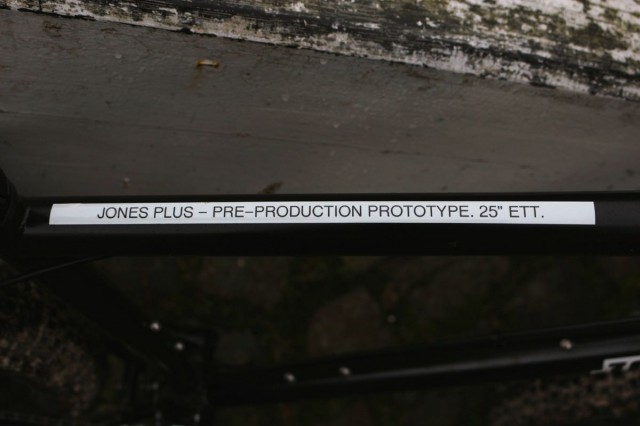
The bike in question was the 2018 Lapierre ProRace SAT 729 – a 100mm travel carbon fibre XC race bike with a twist. The twist comes in the form of a hardtail frame (which looks not unlike the GT triple triangle design, but) which has a carefully tuned carbon fibre layup and includes an interrupted seatstay/top tube junction (with the gap filled by an elastomer bumper), which allows 5-6mm of vertical movement at the rear wheel of the bike. Other manufacturers, notably Trek and BMC, have produced lightweight super-fast XC softtails in recent years, but Lapierre has been searching for the Goldilocks recipe for making a bike that’s both stiff when you give it some beans, but one which also cushions trail vibration when the terrain demands it.

A key difference from the Trek Procaliber (which I tested for Singletrack Magazine back in May 2016) is that the Lapierre system functions all the time, including when the rider is standing – this differs substantially from the Trek Procaliber, which only functions when the rider is seated. Out on the trail the difference is noticeable. I love the Trek Procaliber (and for full disclosure, I also own one), but having spent time on the Lapierre ProRace SAT 729, my view is that its a more comfortable (and therefore less tiring) and dare I say it, more fun bike to ride.

The Bike
As the dustsheet was whipped off the freshly polished and set-up podium bike for the select bunch of journalists to ogle during the marketing presentation, there was an audible appreciative murmur. The ProRace 729 looks fast even when it’s sitting still and in such an image-driven pursuit as XC mountain biking, that was already a tick in the right box.
I’d managed to get a sneak preview of the bike before breakfast, so knew what was coming – I’d snuck out, camera in hand, on the slightly devious pretence of dropping my SPD pedals off with the mechanics. In the weeks before the press launch, the PR team at Lapierre had requested all of our vital statistics – height, inside leg, weight etc, so that when the team of journos arrived, there waiting for us would be a perfectly set up bike, with the brakes switched to match our country of origin, saddles set to within a few mm of the right height and our names on a handwritten label stuck in the bottle cage.
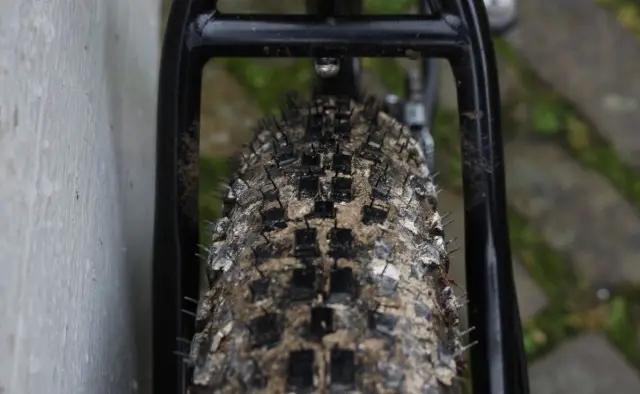
During my early morning reconnoitre, the mechanics were busy putting the final touches to the bikes. Each one had been set-up tubeless for us (they will come tubeless ready, but you’ll need to add your sealant of choice before you hit the trail), and they were adjusting tyre pressure and tweaking the gears and brakes. Interestingly each bike had a piece of Lapierre blue plumber’s lagging covering the length of the toptube. The team were obviously pretty wise to sneaky journos coming down early for a quick peek, and the blue insulation carefully took your eye away from the Shock Absorption Technology (hence the SAT in the bike’s name) module which sits at the toptube/seat tube junction.
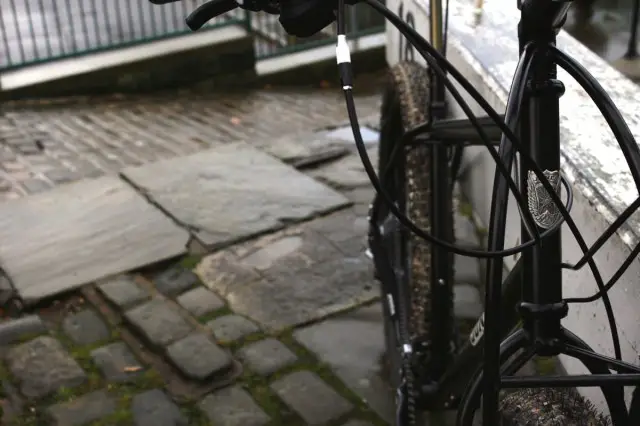
Lapierre introduced the SAT system on its endurance road bike range back in 2014, but following in the footsteps of competitors such as Trek, it has tweaked the design and moved it across to selected models in its 2018 XC MTB range too. During the presentation, the chief design engineer told us that the bare frame weight (without paint, graphics or gloss top coat) was sub 1000g and even with those factored in, was around 1070g. That’s pretty impressive for a standard hardtail, let alone one with an element of suspension built in.
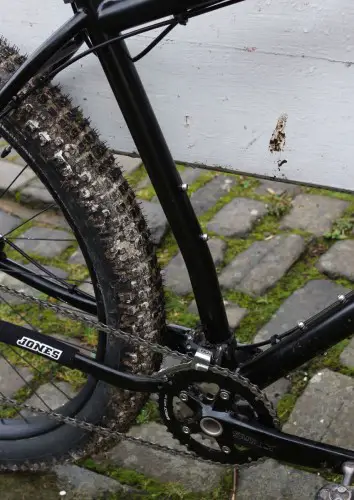
The top two models in the range, the 929 and 729, will share the same A grade carbon fibre layup. The lowest of the three models, the 629 will get a slightly lower grade of carbon, which will result in a slight weight penalty, but also will hit a lower price point for the consumer. The frame has undergone an impressive range of tube manipulation at the design stage to allow it to function in the way that Lapierre wanted. The top tube, at the junction with the head tube, is dramatically ovalised sideways.
The bike comes with the Lapierre trademark thumbprint logo applied to the top tube. If you did indeed place your thumb over the logo, it was possible to compress the top tube quite impressively – the implication being that the tube wall thickness was as thin as Lapierre could get away with. At the back of the frame, the seatstays are ovalised vertically and work in tandem with a heavily manipulated seattube (which is noticeably reduced in diameter towards the bottom) to create the compliance that allows for the vertical movement at the rear wheel.
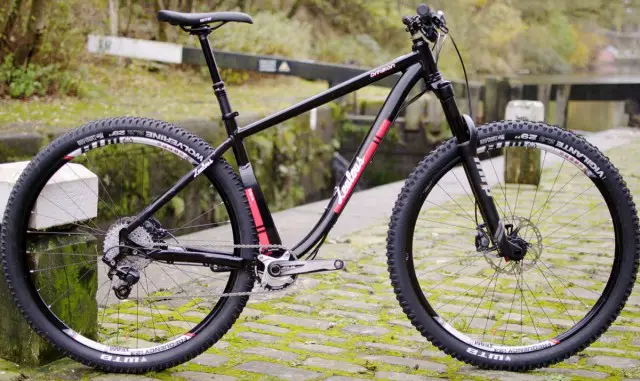
The seat tube was so heavily manipulated that it wasn’t possible to build in a second set of bottle cage bosses on the frame. The design engineer said that in order to allow for their (currently in-development) XC orientated dropper post to play nicely with the frame (and for the frame to pass their stringent in-house ISO9001-2008 compliance requirements), it wasn’t possible to fit a second set of bottle bosses. Interestingly, despite the frames having been submitted to both a brutal testing regime both at Lapierre’s factory in Dijon and out on the trail under the control of Nico Vouilloz, during the test ride, one of the early pre-production frames showed signs of failure just below the bottom of the seat post insertion point. But that’s what pre-production bikes are for, eh? This frame was to be sent off for an autopsy and some detailed structural analysis at the factory to find the cause of the fault and to attempt to rectify the problem before the frame goes into full production.
Lapierre mentioned its Trapdoor technology during the presentation – essentially a small bolt-on plate that sits under the bottom bracket shell. This was designed to allow easy insertion and fitting of a Di2 internal battery. While this seemed a good idea, it was interesting to note that none of the bikes in the range were specified with Di2 componentry, so this feature was unlikely to see much use as specced. The geometry of the ProRace 729 was on-trend for an XC orientated bike, but also felt bang on the money. Super short 428mm chainstays, a bottom bracket drop of 60mm, head angle of 69.5°, seat angle of 73° and a reach of 415mm for my medium test bike translated to a playful feel on the trail. The super short chainstays undoubtedly help account for some of the climbing prowess while the low bottom bracket/relatively short reach/short stem/wide bars help generate a lot of the flickability and boost the fun factor the bike.
The Build
Our test bikes were the 729 model, which sits in the middle of the range of the three ProRace bikes that Lapierre will be offering at the official public launch in August. It came fitted with a SRAM X01 Eagle carbon 1×12 groupset (with 10-50 cassette at the rear), SRAM Level TL brakes (with 180mm front/160mm rear rotors), Race Face Next carbon flat bars, Race Face LP stem and Race Face LP carbon post. Wheels were from Mavic and were Crossmax Elite 29 in the boost format. Contact points came in the shape of a Fizi:k Tundra saddle and Lapierre branded foam lock-on grips.
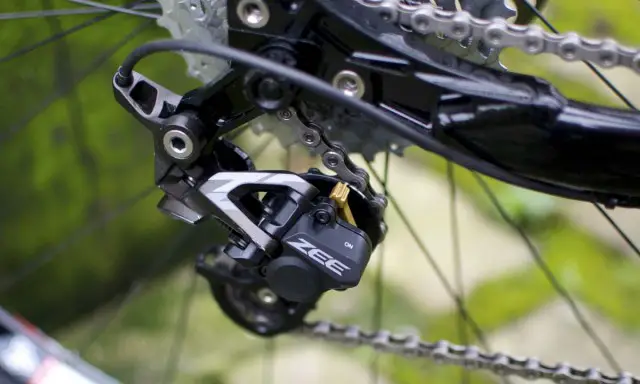
So far, so on-trend. The only other item of note in the spec was the ProRace X Integrated Spare Link – a reinforced plastic chainguide which incorporates an emergency quicklink for the SRAM 12 speed chain. This wont be the part of the spec sheet which sells the bike to most potential riders. I would be tempted to say that it was a bit of marketing fluff if I was being harsh. It will obviously help prevent the chain from jumping off and it means you’ll always have a quicklink with you, but when the SRAM X1 carbon chainset is already fitted with a thick-thin chainring (to prevent the chain from being unshipped) and you can tape a quicklink to the frame with a small piece of electrical tape, this seemed a bit like a solution looking for a problem to me (Ed: I think that’s a brilliant idea, so it might just be you Olly!)
Groupset and contact points selection are a very personal choice and this bike proved that. I’m a fully paid up Shimano fanboy and wasn’t won over by the SRAM X01 Eagle groupset, but that’s due to personal preference and years of using finger levers as well as thumb levers to shift. I was, however a little underwhelmed by the brakes – the SRAM Level TL models had plenty of power, but pumped up noticeably as the test ride wore on. Perhaps they needed a bleed. While I’m being critical, my arse definitely isn’t Fizi:k shaped and I would swap out the grips for my personal preference too. Obviously, my preference for Shimano over SRAM wont be everyone else’s – if you’re a SRAM fan already, you’ll undoubtedly love it.
At the time of the press launch, the UK retail price for the bike hadn’t been confirmed. In order to be competitive and to attract potential buyers to what it currently a relatively small brand in the UK market, Lapierre will need to do some pretty serious number crunching. Its estimated price for Euroland was in the range of €3499-€3699. With the slightly lower specced 2017 model year Trek Procaliber 9.8 currently selling for £3400 and the 2017 BMC Teamelite TE02 in Shimano XT spec selling for £3299, it looks as though the Lapierre ProRace SAT 729 will be very competitive both in terms of spec and price.
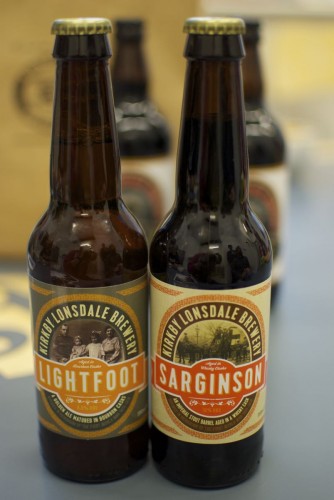
The ride
Normally you wouldn’t expect a lightweight XC hardtail to climb well on loose/steep/rooty/rocky terrain – your view might be that it would spit traction as the minimally treaded tyres struggled for purchase. The perceived wisdom would be that a lightweight full sus bike would outgrip it and therefore outride it. But with the ProRace SAT this wasn’t the case. I followed one of our local guides up a particularly brutal section of climb – steep, loose and techy enough to warrant plenty of body-English to manhandle the bike to the line you wanted it on. The guide was competent and fit, but he had noticeably less grip on his lightweight carbon full sus bike than I did on my ProRace hardtail and sure enough, half way up one of the steepest sections his back wheel spun out and he had to dismount and admit defeat. OK, this could have been a difference in tyre choice, or tyre pressure, or line choice or maybe just that his legs were cooked, but the upshot was the he ended up pushing up the trail and I managed to clean it, riding the trail on-sight, on a bike that I’d only been riding for a few hours.
On our first morning of testing, the route started with an archetypal euro style climb – a vehicle width gravel track with stunning mountain views. Sure we could feel the effects of being at altitude, but there wasn’t anything technically demanding to challenge either us, or the bikes. This all changed when we reached the mornings high point – a small chapel perched on the end of a ridge with a clearing in the trees giving amazing views of snow-capped mountain peaks, extensive broadleaf forest and the occasional alpine-style chalets in the distance. We had two French mountain bike guides looking after our group and as I know from past experience, French guides work in a very different way to their British counterparts – essentially, they give very little (if any) description of what is coming up next and expect you to be able to follow their line and keep up with their pace. As soon as we clipped in and dropped off the ridge, it became immediately obvious that the earlier sections of non-technical fireroad with big views had lulled us into a false sense of security and things from here on were going to get quite significantly more challenging! Straight away the trail was steep, littered with roots and included plenty of off-camber sections and tight corners.
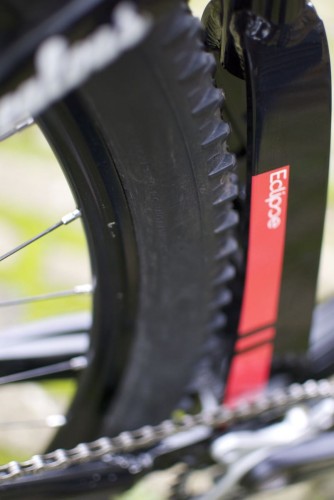
This was exactly the kind of trail that we had hoped we would be able to test the bike on, but it still came as somewhat of a shock, particularly with only a cursory warning that we might want to drop our saddles being uttered before we set off. Obviously as I was testing an XC race bike I stubbornly kept my saddle at full height – I mean proper XC racers wouldn’t put their saddle down, so why would I? The fact that the bikes we were testing were pre-production models and weren’t fitted with the XC-specific dropper post that Lapierre currently have under development (and which may well come as standard spec on later editions of the bike) meant that dropping the saddle was (probably) more of a pain than it was worth. I also figured that testing the bike with the saddle at normal height would be a good test of the bike’s race calibre and capabilities – would the expectations from the marketing blurb be realised on the ground, was the geometry right, how would the forks cope with being heavily loaded, what was the tyre grip like when your weight was off the back? The short answer to this is that the Prorace coped with aplomb. I was running the stock Maxxis Ardent front/ Ikon rear combination tyres at 20 psi – quite significantly lower than some of the other journos were risking and they proved to be perfectly up to the job – exactly the right combination of grip, cushioning and low-drag. The forks, Rockshox SID RLs, fitted with a Onelock remote lockout and in the Boost variant, were incredible.
The travel was plush and controlled, the compression and rebound damping spot-on straight from the word go and the combination of Boost width and torque end–caps meant they resisted twist admirably. Doing a direct comparison with the geometry on the Trek Procaliber 9.8 (arguably the Lapierre’s closest direct rival), the Prorace is slightly shorter and taller overall. In the stock set-up, this relatively short/wide/tall feel really gave the Prorace a super confident, planted feel, but also created enough zip to make the rider grin manically while cutting tight turns through the trees. For riders seeking a more traditional/stretched-out XC hardtail feel, it would be worth trying one size bigger before you put your cash down. By sizing up, you get an additional 25mm of top tube length, but the same short chainstays, frame angles and relatively low bottom bracket height. Nico Vouilloz has a big input into all of Lapierre’s mountain bike range and his super confident, flowy riding style are very definitely evident in the way the Prorace 729 handles.
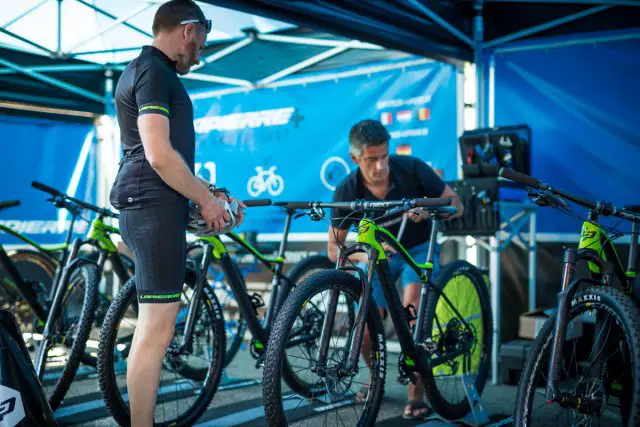
On our test ride, Nico joined us in the afternoon on his non-logoed prototype version of the 729. Even with his likely access to whatever components he wanted, his bike wasn’t radically different to the stock versions. Nico was running a slightly narrower cockpit, Shimano XT 1×11 groupset, a prototype Lapierre dropper post and skinwall versions of the Maxxis tyres that the stock bikes came with, but other than that his bike appeared to be identical to ours. Watching him ride, it’s obvious that despite having officially retired from downhill and enduro racing, Nico hasn’t lost any of his skill (or fitness). His ability to pick the perfect line, stick the bike on sections of trail where even significantly bigger/burlier bikes would struggle for grip* and to constantly make it look as though he was having fun were not only inspiring to watch, but also translated perfectly into the way the Prorace 729 felt.
*We’re going to gloss over the bit where Nico tried (and failed) to clean a line across the top of a lethally slippery rock dam on a stream, by the way. Even having toppled unceremoniously off the side of the dam and into water significantly deeper than any of us was expecting, he managed to maintain his composure and his sense of fun. Luckily the scorching temperatures meant he soon dried out. Not sure his iPhone was ever going to be quite the same again though…
Summary
XC racers are a strange breed. They seek speed at all costs. Lightness and stiffness are king, even at the expense of comfort. Long, low, light and above all fast are their mantra. While I can in no way consider myself a top-level racer, I can identify 100% with that ethos. I would actively choose a bike that climbed that a proverbial scolded furry animal over one that had super plush suspension or which could survive being thrown about in a bike park.
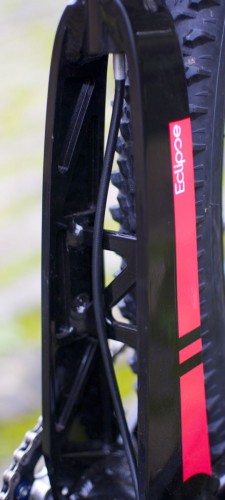
Trail riders on the other hand want a fun, involving ride, not to feel that they’ve been run over at the end of a day in the hills and often want a bike that’s low maintenance and durable too. With the Prorace 729, Lapierre has definitely found the magic set of ingredients to produce a bike that will keep both sets of riders happy. It’s never going to be a bike for the body armour and full-face helmet brigade, but if you want a bike to ride up and over the mountain, rather than just down from the summit, then the Prorace 729 should be right at the top of your list. Just don’t forget to shave your legs and stick on some bar ends as soon as you’ve got it home from the shop.
2018 Lapierre ProRace SAT 729 Specification
- Frame // ProRace Sat 29 ultimate carbon frame, with tooled boost 148mm rear
- Fork // Rockshox SID RL 29͛͛, with tooled boost 110mm fitting, Oneloc remote lock-out, 100mm travel
- Wheels // Mavic Crossmax Elite 29͛͛ Boost fitting, XD driver, torque caps on front hub
- Tyres // Maxxis Ardent 2.25 front and Maxxis Ikon 2.20 TLR rear
- Chainset // SRAM X1 carbon cranks with 32t narrow/wide chainring
- Front Mech // N/A
- Rear Mech //SRAM X01 Eagle carbon, 12spd
- Shifters //SRAM EX1, 8-Speed Cassette //SRAM X01, 11-50t
- Brakes // SRAM Level TL, 180mm front & 160mm rear, both post-mount fitting
- Stem // Race Face LP. 70mm
- Bars // Race Face next carbon, 720mm
- Grips // Lapierre foam lock-on
- Seatpost // Race Face LP carbon, 27.2mm diameter
- Saddle //Fizi:k Tundra
- Size Tested // Medium
- Sizes available // S, M, L, XL
Disclosure
Flights, accommodation and hospitality for this press trip were provided by Lapierre.
Review Info
| Brand: | Lapierre |
| Product: | Prorace SAT 729 |
| From: | Lapierre |
| Price: | €3499 |
| Tested: | by Olly Townsend for |
Comments (0)
Leave Reply
Post Comment
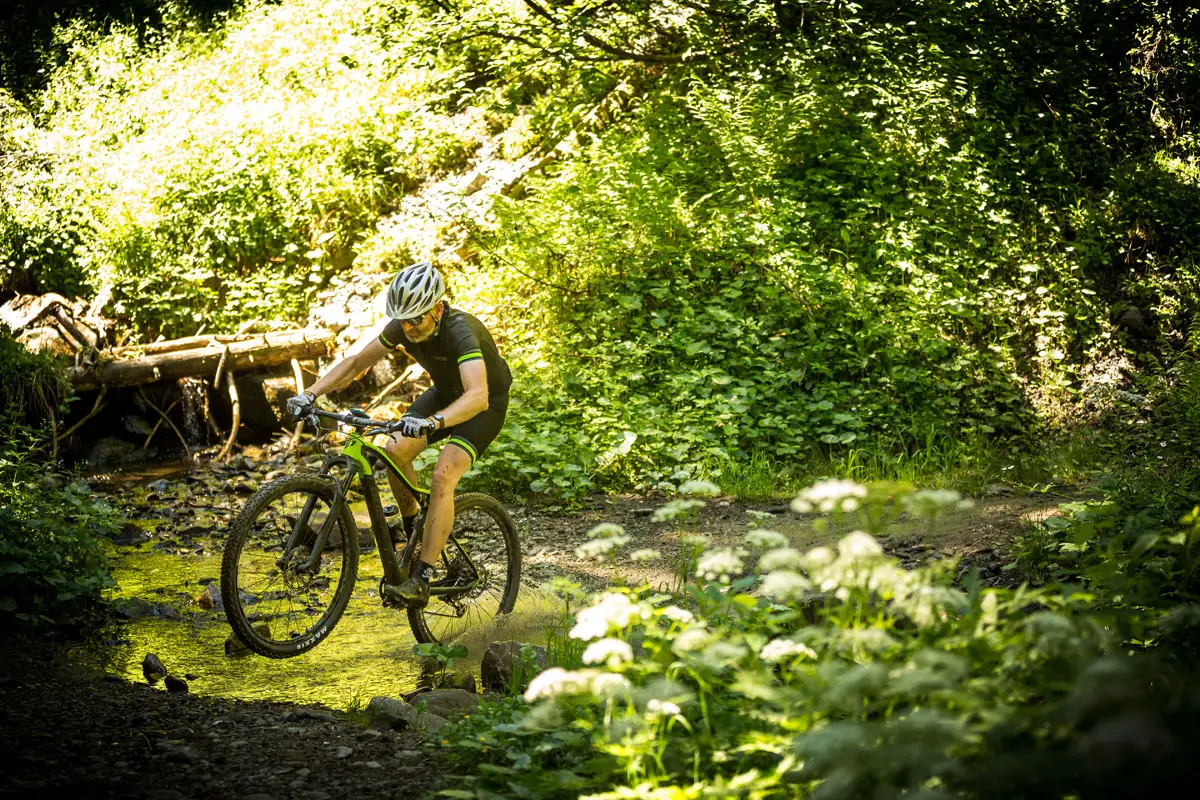

That subtlety branded and colour coded ride kit was a genius move on their part… photos look great.
The kit is amazing – super comfy, great fit and really subtle/minimal branding as you said. It was baking hot the day of the test ride and I thought I would cook dressed all in black, but it breathed remarkably well – you would approve 🙂